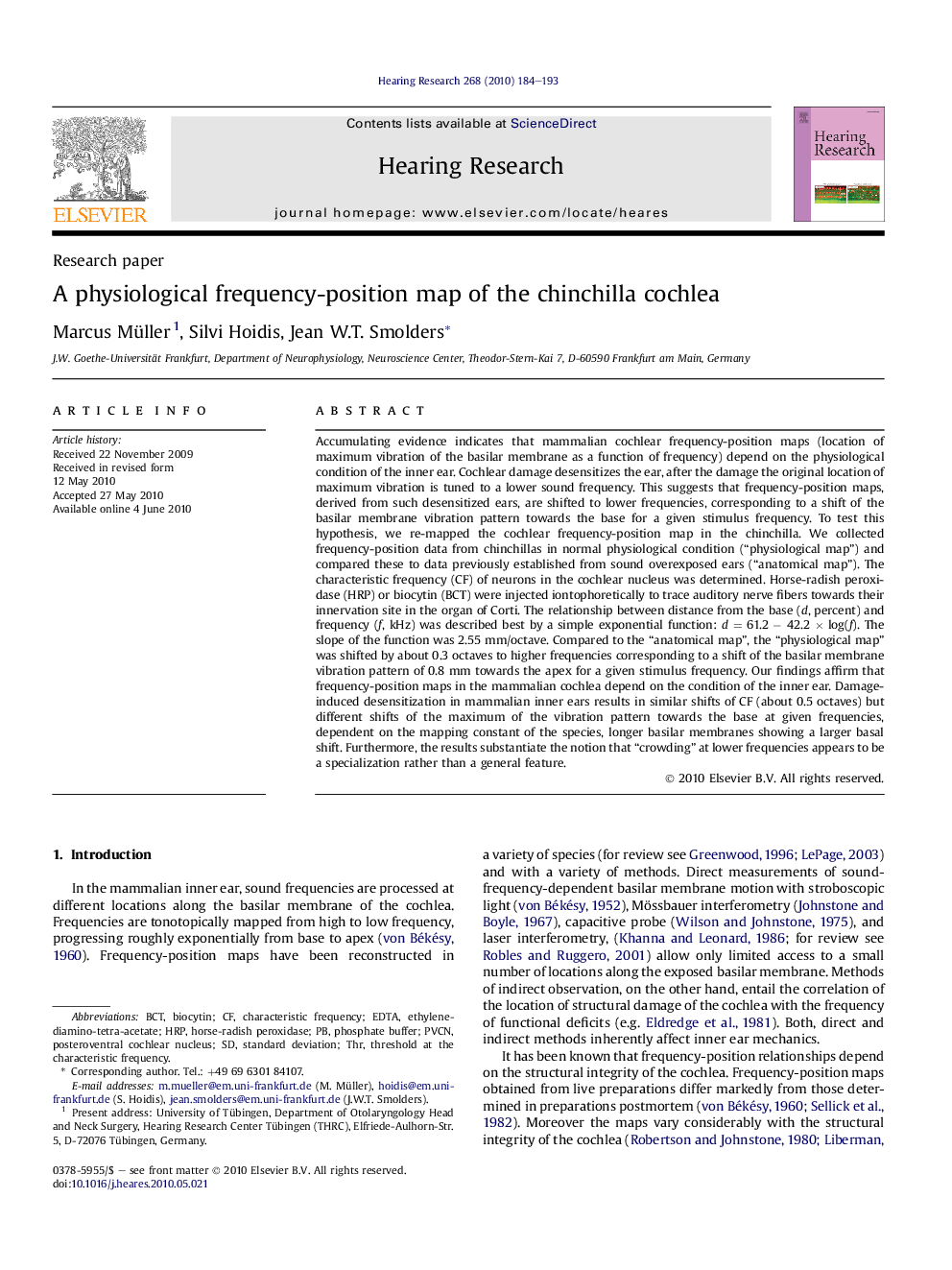| کد مقاله | کد نشریه | سال انتشار | مقاله انگلیسی | نسخه تمام متن |
|---|---|---|---|---|
| 4355616 | 1615632 | 2010 | 10 صفحه PDF | دانلود رایگان |
عنوان انگلیسی مقاله ISI
A physiological frequency-position map of the chinchilla cochlea
دانلود مقاله + سفارش ترجمه
دانلود مقاله ISI انگلیسی
رایگان برای ایرانیان
کلمات کلیدی
موضوعات مرتبط
علوم زیستی و بیوفناوری
علم عصب شناسی
سیستم های حسی
پیش نمایش صفحه اول مقاله

چکیده انگلیسی
Accumulating evidence indicates that mammalian cochlear frequency-position maps (location of maximum vibration of the basilar membrane as a function of frequency) depend on the physiological condition of the inner ear. Cochlear damage desensitizes the ear, after the damage the original location of maximum vibration is tuned to a lower sound frequency. This suggests that frequency-position maps, derived from such desensitized ears, are shifted to lower frequencies, corresponding to a shift of the basilar membrane vibration pattern towards the base for a given stimulus frequency. To test this hypothesis, we re-mapped the cochlear frequency-position map in the chinchilla. We collected frequency-position data from chinchillas in normal physiological condition (“physiological map”) and compared these to data previously established from sound overexposed ears (“anatomical map”). The characteristic frequency (CF) of neurons in the cochlear nucleus was determined. Horse-radish peroxidase (HRP) or biocytin (BCT) were injected iontophoretically to trace auditory nerve fibers towards their innervation site in the organ of Corti. The relationship between distance from the base (d, percent) and frequency (f, kHz) was described best by a simple exponential function: d = 61.2 â 42.2 Ã log(f). The slope of the function was 2.55 mm/octave. Compared to the “anatomical map”, the “physiological map” was shifted by about 0.3 octaves to higher frequencies corresponding to a shift of the basilar membrane vibration pattern of 0.8 mm towards the apex for a given stimulus frequency. Our findings affirm that frequency-position maps in the mammalian cochlea depend on the condition of the inner ear. Damage-induced desensitization in mammalian inner ears results in similar shifts of CF (about 0.5 octaves) but different shifts of the maximum of the vibration pattern towards the base at given frequencies, dependent on the mapping constant of the species, longer basilar membranes showing a larger basal shift. Furthermore, the results substantiate the notion that “crowding” at lower frequencies appears to be a specialization rather than a general feature.
ناشر
Database: Elsevier - ScienceDirect (ساینس دایرکت)
Journal: Hearing Research - Volume 268, Issues 1â2, 1 September 2010, Pages 184-193
Journal: Hearing Research - Volume 268, Issues 1â2, 1 September 2010, Pages 184-193
نویسندگان
Marcus Müller, Silvi Hoidis, Jean W.T. Smolders,